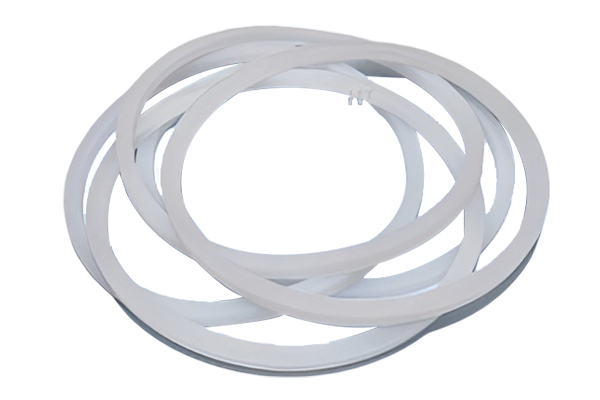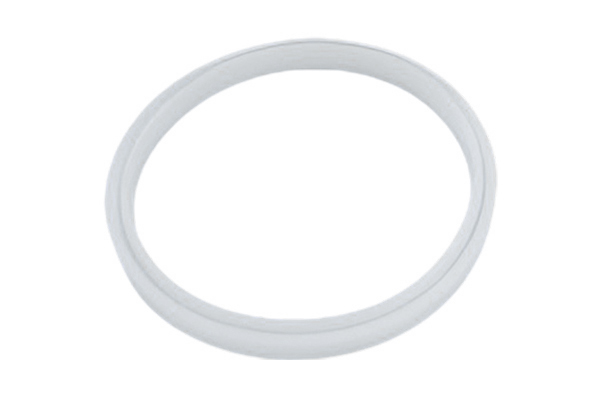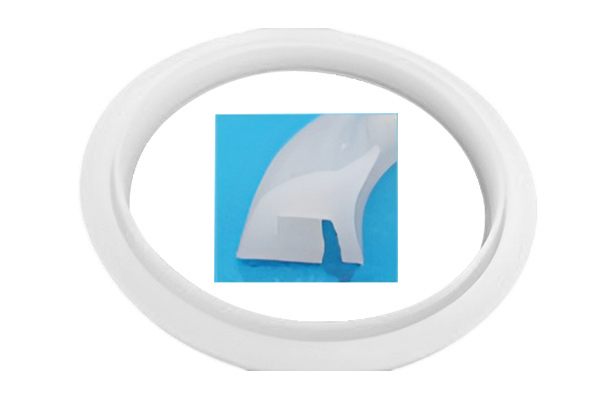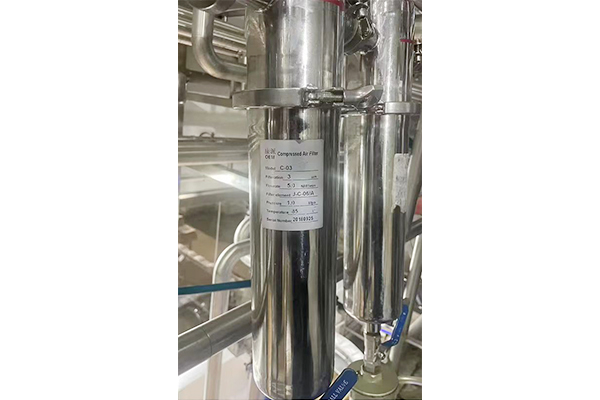How can the laser wire guide nozzle achieve micron-level precision and improve the welding quality of automotive lithium batteries?
Release Time : 2025-06-16
In modern manufacturing, the precision of welding technology directly determines the reliability and performance of the product. Especially in the new energy vehicle industry, lithium batteries are core components, and their welding quality directly affects the safety, energy density and service life of the battery. Laser welding has become a mainstream process due to its high efficiency and precision, and the laser wire guide nozzle is one of the key components to achieve high-precision welding.
The core function of the laser wire guide nozzle is to accurately control the delivery position of the welding wire so that it perfectly matches the focal point of the laser beam. In traditional welding methods, the wire feeding accuracy of the welding wire is affected by factors such as mechanical vibration and thermal deformation, which can easily lead to weld offset or uneven penetration. The laser wire guide technology ensures that the welding wire always enters the molten pool along the predetermined path through optical feedback and real-time adjustment, reducing human errors and process fluctuations.
The high energy density of the laser beam can melt the welding wire and the base material in a very short time, and the precise positioning of the wire guide nozzle ensures the stable formation of the molten pool. When the welding wire is fed into the laser action zone at the optimal angle and position, the molten metal flows more evenly, thus avoiding defects such as pores and cracks. This synergistic effect significantly improves the mechanical properties and electrical conductivity of the welded joint, which is especially suitable for welding of power battery cells, tabs and shells with extremely high welding quality requirements.
To achieve micron-level precision welding wire guidance, the design and control system of the wire guide nozzle are crucial. First, the nozzle uses highly wear-resistant materials to ensure that the welding wire will not produce position deviation due to friction during high-speed transportation. At the same time, the precise guide structure can reduce the swing of the welding wire during the process of travel, so that it always moves in a straight line.
Secondly, the laser wire guide system is usually equipped with a real-time monitoring and feedback mechanism. Through optical sensors or high-speed cameras, the system can dynamically detect the position of the welding wire and compare it with the preset path. Once a small deviation is detected, the control system will immediately adjust the wire feeding mechanism or the focus position of the laser beam to ensure that the welding process is always in the best state. This closed-loop control method greatly reduces the need for human intervention and makes the welding process more stable and reliable.
In addition, the characteristics of laser welding itself also enhance the precision advantage of the wire guide nozzle. Since the laser beam has a very small focused spot, a narrow heat-affected zone, and very small welding deformation, even a slight position deviation of the welding wire may affect the quality of the weld. The high-precision wire guide nozzle can feed the welding wire into the precise position of the laser action zone, making the formation of the molten pool more controllable, thereby improving the consistency and repeatability of the welding.
The manufacturing of automotive lithium batteries places extremely high demands on the welding process. The welding of battery poles, busbars, and shells not only requires high-strength, low-resistance connections, but also must avoid material damage caused by overheating. The high-precision characteristics of the laser wire guide nozzle just meet these requirements.
In the welding of the pole tab, the precise wire feeding of the wire guide nozzle can ensure the perfect fusion of the welding wire and the pole piece, avoiding false welding or over-welding. Since the pole tab is usually made of ultra-thin metal materials, traditional welding is prone to perforation or deformation due to uneven heat input, while the laser combined with high-precision wire guide can achieve uniform heat distribution, ensuring welding strength without damaging the material.
In the welding of battery shells, sealing and mechanical strength are key indicators. The laser wire guide nozzle can achieve continuous and defect-free welds, ensure the airtightness of the battery shell, and prevent electrolyte leakage. At the same time, high-precision welding reduces the need for subsequent processing and improves production efficiency and yield rate.
As the new energy vehicle industry continues to increase its requirements for battery energy density and safety, laser welding technology will continue to be optimized, and the accuracy and intelligence of the wire guide nozzle will be further improved. In the future, combined with artificial intelligence and adaptive control technology, the laser wire guide system is expected to achieve more complex welding path planning, further reduce process fluctuations, and promote power battery manufacturing to a higher level.
In short, the laser wire guide nozzle greatly improves the quality and reliability of automotive lithium battery welding through micron-level precision wire control. Its high stability and low error characteristics make it a core component of high-end laser welding machines, providing key technical support for the high-quality development of the new energy vehicle industry.
The core function of the laser wire guide nozzle is to accurately control the delivery position of the welding wire so that it perfectly matches the focal point of the laser beam. In traditional welding methods, the wire feeding accuracy of the welding wire is affected by factors such as mechanical vibration and thermal deformation, which can easily lead to weld offset or uneven penetration. The laser wire guide technology ensures that the welding wire always enters the molten pool along the predetermined path through optical feedback and real-time adjustment, reducing human errors and process fluctuations.
The high energy density of the laser beam can melt the welding wire and the base material in a very short time, and the precise positioning of the wire guide nozzle ensures the stable formation of the molten pool. When the welding wire is fed into the laser action zone at the optimal angle and position, the molten metal flows more evenly, thus avoiding defects such as pores and cracks. This synergistic effect significantly improves the mechanical properties and electrical conductivity of the welded joint, which is especially suitable for welding of power battery cells, tabs and shells with extremely high welding quality requirements.
To achieve micron-level precision welding wire guidance, the design and control system of the wire guide nozzle are crucial. First, the nozzle uses highly wear-resistant materials to ensure that the welding wire will not produce position deviation due to friction during high-speed transportation. At the same time, the precise guide structure can reduce the swing of the welding wire during the process of travel, so that it always moves in a straight line.
Secondly, the laser wire guide system is usually equipped with a real-time monitoring and feedback mechanism. Through optical sensors or high-speed cameras, the system can dynamically detect the position of the welding wire and compare it with the preset path. Once a small deviation is detected, the control system will immediately adjust the wire feeding mechanism or the focus position of the laser beam to ensure that the welding process is always in the best state. This closed-loop control method greatly reduces the need for human intervention and makes the welding process more stable and reliable.
In addition, the characteristics of laser welding itself also enhance the precision advantage of the wire guide nozzle. Since the laser beam has a very small focused spot, a narrow heat-affected zone, and very small welding deformation, even a slight position deviation of the welding wire may affect the quality of the weld. The high-precision wire guide nozzle can feed the welding wire into the precise position of the laser action zone, making the formation of the molten pool more controllable, thereby improving the consistency and repeatability of the welding.
The manufacturing of automotive lithium batteries places extremely high demands on the welding process. The welding of battery poles, busbars, and shells not only requires high-strength, low-resistance connections, but also must avoid material damage caused by overheating. The high-precision characteristics of the laser wire guide nozzle just meet these requirements.
In the welding of the pole tab, the precise wire feeding of the wire guide nozzle can ensure the perfect fusion of the welding wire and the pole piece, avoiding false welding or over-welding. Since the pole tab is usually made of ultra-thin metal materials, traditional welding is prone to perforation or deformation due to uneven heat input, while the laser combined with high-precision wire guide can achieve uniform heat distribution, ensuring welding strength without damaging the material.
In the welding of battery shells, sealing and mechanical strength are key indicators. The laser wire guide nozzle can achieve continuous and defect-free welds, ensure the airtightness of the battery shell, and prevent electrolyte leakage. At the same time, high-precision welding reduces the need for subsequent processing and improves production efficiency and yield rate.
As the new energy vehicle industry continues to increase its requirements for battery energy density and safety, laser welding technology will continue to be optimized, and the accuracy and intelligence of the wire guide nozzle will be further improved. In the future, combined with artificial intelligence and adaptive control technology, the laser wire guide system is expected to achieve more complex welding path planning, further reduce process fluctuations, and promote power battery manufacturing to a higher level.
In short, the laser wire guide nozzle greatly improves the quality and reliability of automotive lithium battery welding through micron-level precision wire control. Its high stability and low error characteristics make it a core component of high-end laser welding machines, providing key technical support for the high-quality development of the new energy vehicle industry.







